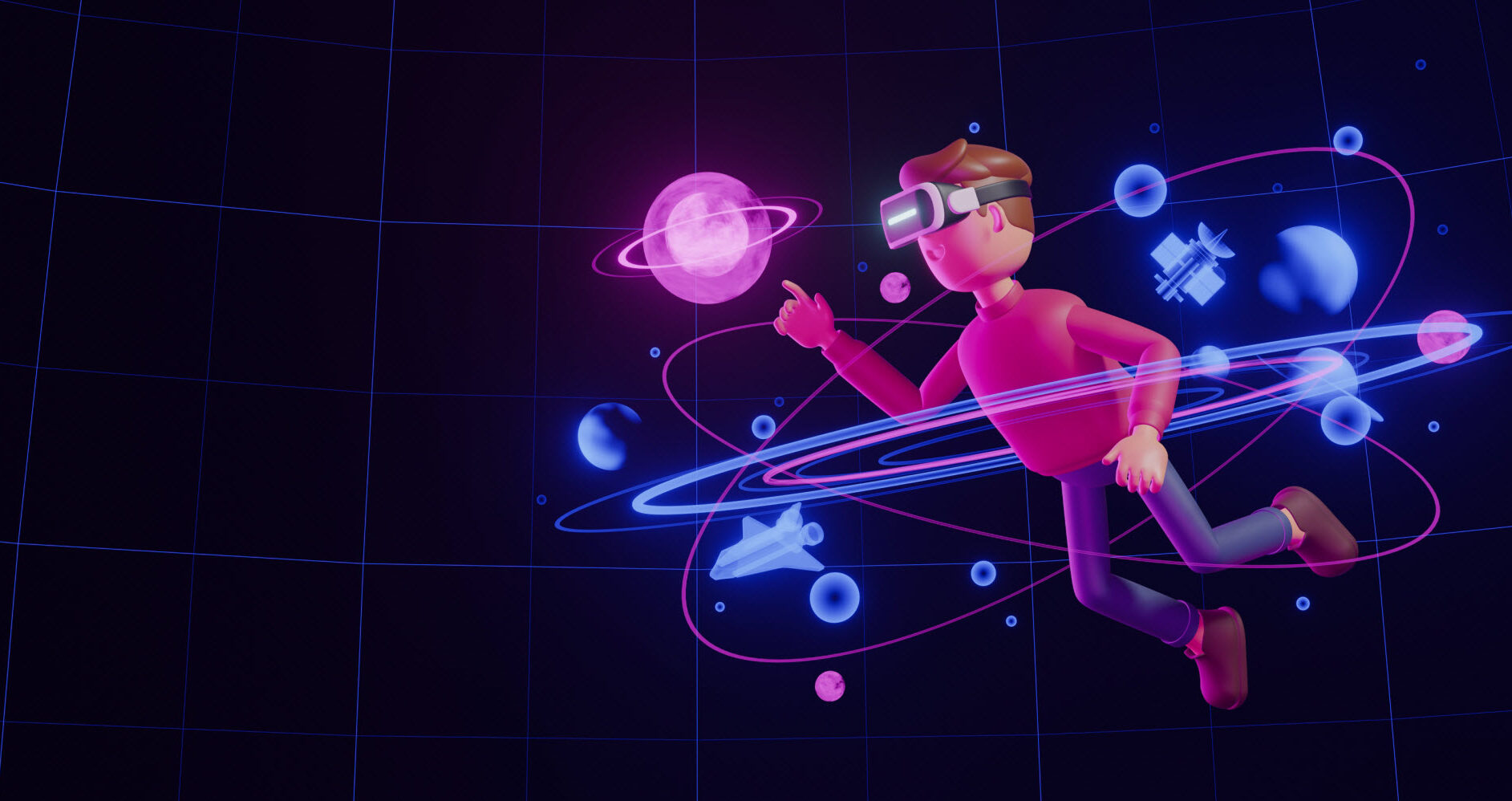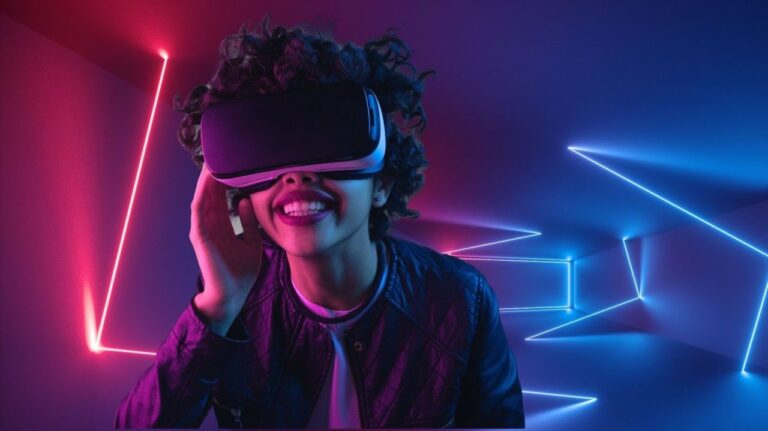Combining real-time rendering technology with the metaverse is changing the virtual experience scene in many fields. The most recent study report for 2025 indicates that this dynamic convergence is causing exponential expansion in fields including digital twin technology, architectural visualization, gaming, and entertainment. Developers and end users are seeing a revolution in how digital content is consumed and created as virtual environments change from fixed, pre-generated scenes to immersive, real-time experiences.
This paper examines essential technologies driving this change, assesses industry leaders, describes how metaverse applications impact the real-time rendering market, and notes regional patterns. By the end, readers will know why developers, investors, and businesses alike are paying great attention to this area.
Tech Behind the Metaverse
One must appreciate how the metaverse idea has evolved from speculative fiction to an enterprise-level technology paradigm to grasp the explosion of market activity. An interconnected, constant digital reality, the metaverse mostly depends on real-time 3D rendering engines like Unity Technologies and Unreal Engine (by Epic Games). These systems let dynamic, photorealistic environments—which run everything from VR conferences to blockchain-based virtual economies—to be created with perfect simplicity.
The 2025 market analysis describes real-time rendering as the fundamental infrastructure for metaverse settings. It guarantees user immersion in virtual worlds, lowers latency, and offers ultra-fast graphics processing. Edge computing, 5G infrastructure, and AI-driven rendering let the metaverse support virtually zero lag and excellent graphical fidelity, enabling massively multi-user situations with near-zero lag.
Metaverse Rendering Growth Drivers
The paper identifies various catalysts driving the expected CAGR of over 30% in the segment, focusing on metaverse-oriented real-time rendering:
High-performance, low-latency rendering engines are in greater demand as XR (Extended Reality) usage, especially augmented reality (AR) and virtual reality (VR) headsets, explodes. Companies are quickly adding metaverse elements to their processes. For cooperative 3D simulation and digital twin projects, for example, manufacturing and architecture companies are embracing NVIDIA Omniverse.

One still mostly dominating influence is the game industry. Roblox, Fortnite, and Meta’s Horizon Worlds are not only games; they fully function as virtual ecosystems dependent on real-time rendering to support dynamic player interaction, environmental manipulation, and real-world economic models via NFTs and crypto-assets.
Furthermore, the emergence of cloud gaming and rendering-as-a-service (RaaS) is democratizing access to high-end rendering hardware. Developers looking to create in the metaverse without making costly local GPU setups are decreasing the entrance hurdle with platforms such as AWS ThinkBox, Google Cloud XR, and Microsoft Azure Rendering.
Tech Advancements in Metaverse Rendering
The research report emphasizes various technological developments influencing the metaverse rendering environment. Thanks to strong GPUs like NVIDIA RTX and AMD Radeon RX series, ray tracing and global illumination are being done in real time today. These technologies help virtual surroundings to be visually believable by allowing reasonable shadows, lighting, and reflections.
Particularly in real time, AI-powered upscaling such as NVIDIA DLSS (Deep Learning Super Sampling) helps balance performance and quality, therefore helping to balance. Furthermore, procedural generating tools and digital human rendering engines are becoming increasingly popular, which allows great virtual environments and lifelike avatars to be created with little human work.
Still another participant in this scene is blockchain technology. A key component in metaverse monetization techniques, decentralized asset ownership, NFT markets, and metaverse land sales—such as in Decentraland or The Sandbox—rely on real-time rendering to depict ownership and economic interactions.
2025 Metaverse Market Segments
The 2025 study groups the market into many segments based on application, end-user, and region. Metaverse real-time rendering finds uses in gaming, retail, healthcare, education, real estate, and manufacturing.
E-commerce companies are building virtual showrooms, including real-time product demos. For instance, IKEA Studio lets consumers see home furniture using augmented reality. Today, VR scenarios driven by real-time rendering enable healthcare training simulators to imitate surgical operations with anatomical accuracy.

Educational institutions are trialing virtual campuses and immersive learning opportunities. The Virtual Human Interaction Lab at Stanford University is pioneering studies on how metaverse settings affect schooling psychology.
By building digital twins of buildings, real estate developers let customers tour the properties virtually in real time, lowering expenses and raising sales conversion. Markets with fast digital adoption, such as Dubai and Singapore, show this tendency exceptionally well.
Metaverse Development by Region
Thanks to tech behemoths like Meta, Microsoft, and Epic Games—all heavily investing in the metaverse infrastructure—North America still dominates this sector.
Close behind with projects like the European Metaverse Alliance, meant to guarantee ethical development and interoperability standards, is Europe. Key markets include Sweden, Germany, and France, where industrial simulation and automobile design use real-time rendering.
The Asia-Pacific area, particularly China, South Korea, and Japan, is fast becoming a hub for consumer-focused metaverse uses. Tencent and Alibaba are funding virtual commerce, and South Korea’s government-backed Metaverse Seoul project shows national-level dedication to this new digital paradigm.
The Vision for 2025 and Beyond
The distinction between digital and physical will keep blurring by 2025 as real-time rendering becomes a tool and a strategic advantage. Demand for photorealistic, consistent digital environments will inspire creativity in many fields. Using it for civic planning, simulations, and public involvement, governments can progressively find themselves in the metaverse space.
The direction of market growth also suggests more hiring across metaverse jobs: 3D artists, real-time graphics engineers, and XR experience designers will be highly sought after. Moreover, interoperability models such as OpenXR and the Metaverse Standards Forum will probably develop to encourage flawless platform migration.

